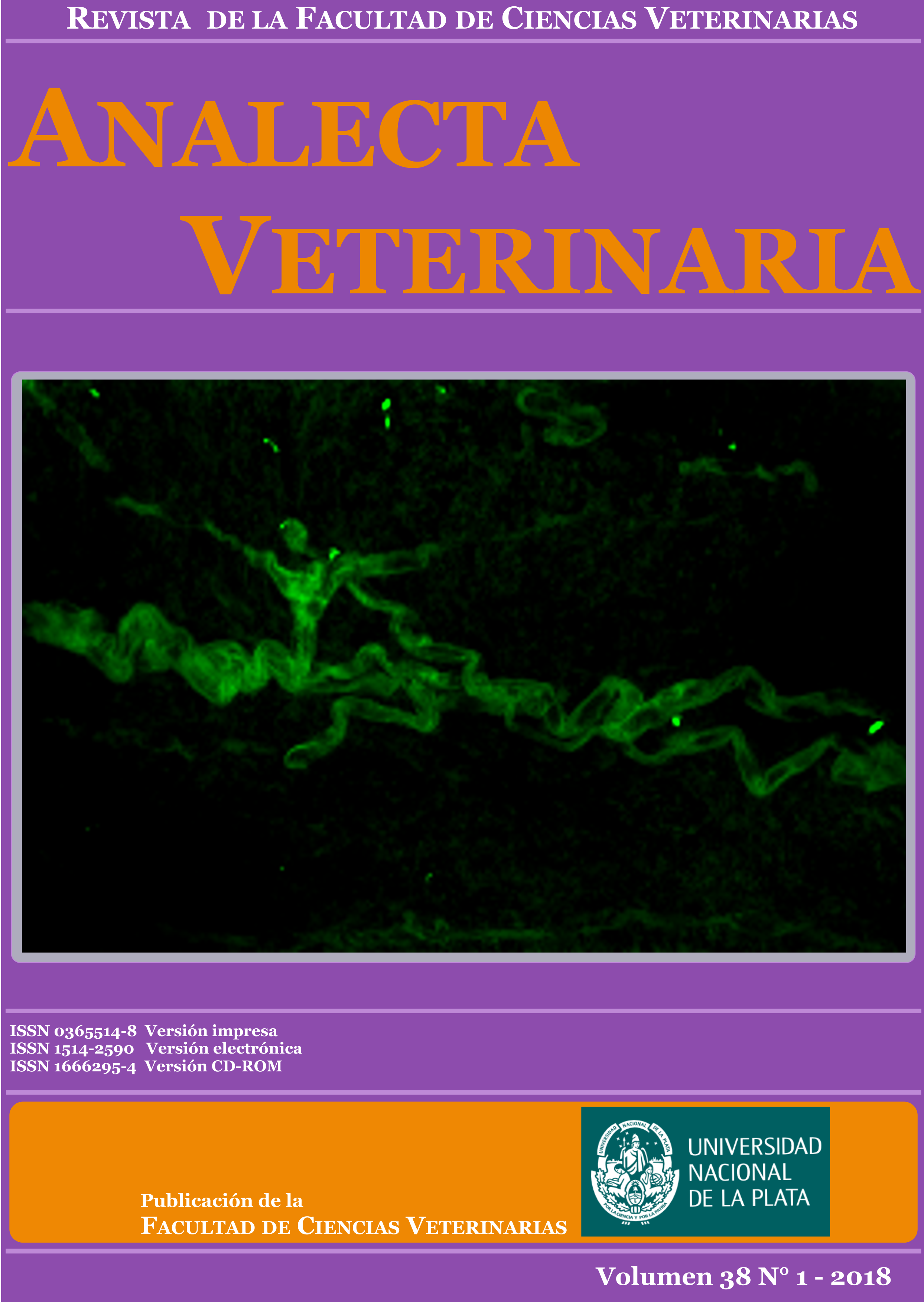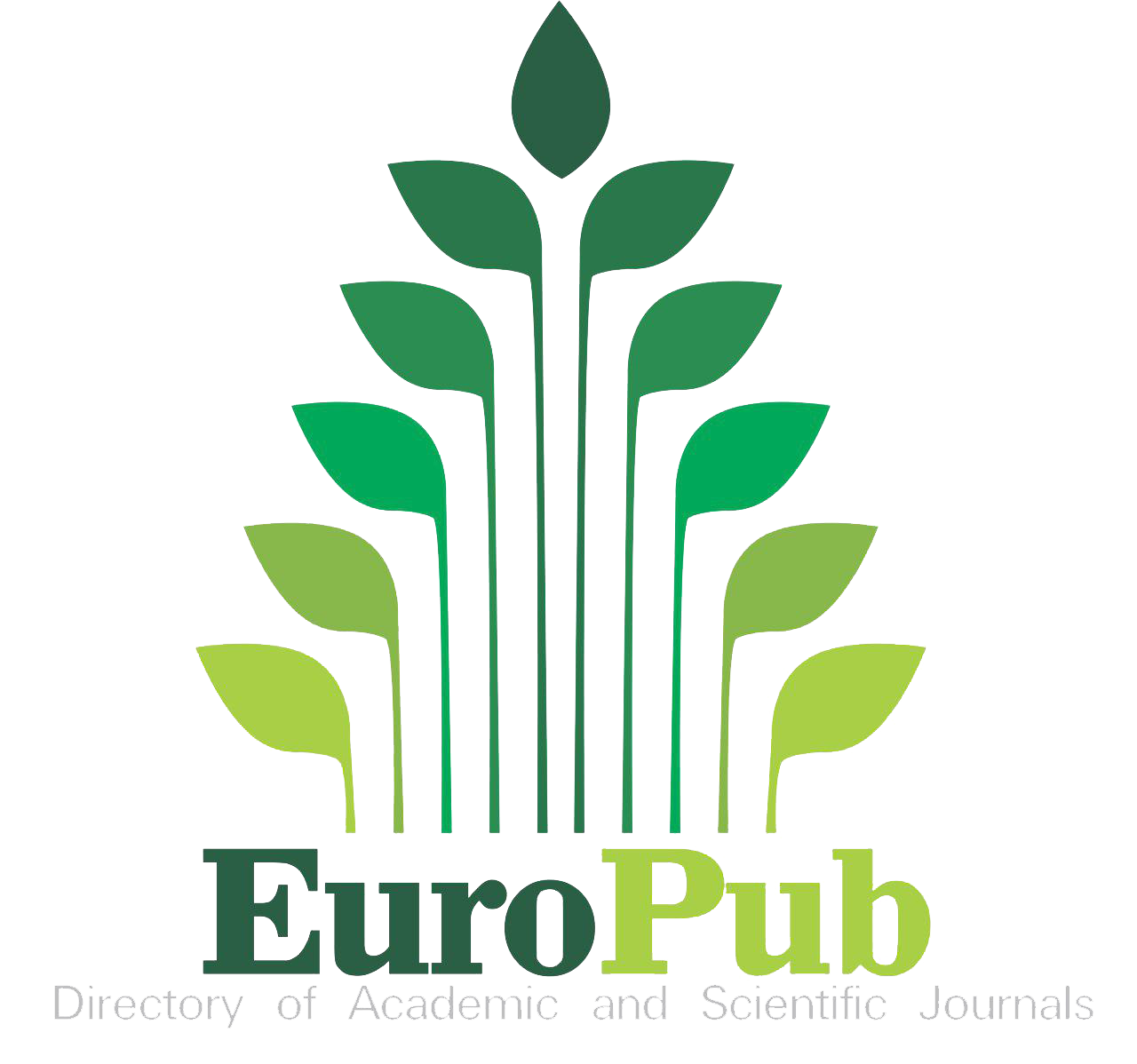Canine and feline coccidioidomycosis: clinical findings, diagnosis and treatment
DOI:
https://doi.org/10.24215/15142590e023Keywords:
Coccidioides spp., coccidioidomycosis, diagnosis, treatmentAbstract
Coccidioidomycosis is an endemic disease of the arid zones of America. Two species of this genus have been identified: Coccidioides immitis and Coccidioides posadasii. The variety of susceptible species, including humans, makes its diagnosis highly relevant. This disease does not have a specific symptomatology that allows its identification. Both in dogs and cats, it may present as a mild pulmonary disease or as a disseminated multisystemic disease that can cause death. The diagnosis is based on the histopathological findings of microabscesses (fresh) in respiratory or other organs with identification of spherules containing endospores. However, because of the challenge of its diagnosis, especially in regions where it is not endemic, it is necessary to proceed with complementary tests such as culture and isolation, under the appropriate biosecurity conditions, and subsequent confirmation by molecular tests.
Downloads
Metrics
References
Binnicker MJ, Buckwalter SP, Eisberner JJ, Stewart RA, Mccullough AE, Wohlfiel SL, Wengenack NL. 2007. Detection of Coccidioides species in clinical specimens by realtime PCR. Journal of Clinical Microbiology. 45:1738. doi: 10.1128/JCM.0177606
Burt A, Dechairo BM, Koenig GL, Carter DA, White TJ, Taylor JW. 1997. Molecular markers reveal differentiation among isolates of Coccidioides immitis from California, Arizona and Texas. Molecular Ecology. 6:7816.
CalderónGarcidueñas AL, VázquezContreras JA, GonzálezMurillo EA, Vázquez Martínez CA, CerdáFlores RM. 2013. Factores de riesgo en pacientes con coccidioidomicosis diseminada fatal. Estudio de casos y controles. Revista Española de Patología. 46:2129.
Canteros C, SuárezÁlvarez R. 2012. Micosis Sistémicas Endémicas. (Tesina. Especialidad en Diagnóstico Veterinario de Laboratorio). Facultad de Ciencias Veterinarias. Universidad Nacional de la Plata, La Plata Argentina.
Canteros CE, Toranzo A, SuárezÁlvarez R, Davel G, CastañónOlivares LR, Nápoli J. 2009. Identidad genética del hongo causante del primer caso de coccidioidomicosis descripto por Alejandro Posadas en 1892. Medicina (Buenos Aires). 69:21520.
CarradaBravo T. 2014. Los métodos de laboratorio en el diagnóstico de la coccidioidomicosis. Revista Chilena de Infectología. 31:2937.
CarrascoZuber JE, NavarreteDechent C, Bonifaz A, Fich F, VialLetelier V, BerroetaMauriziano D. 2016. Afectación cutánea en las micosis profundas: una revisión de la literatura. Parte 2. Micosis sistémicas. Actas DermoSifiliográficas. 107:81622. doi: 10.1016/j.ad.2016.06.001
Casal JI, Álvarez RO, Lee W, Rivas MC, Davel G, Canteros CE. 2008. Disseminated coccidioidomycosis in a dog. Revista Argentina de Microbiología. 40:10919.
CastañónOlivares LR, GuereñaElizalde D, GonzálezMartínez MR, LiceaNavarro AF, GonzálezGonzález GM, ArochCalderón A. 2007. Molecular identification of Coccidioides isolates from Mexican patients. Annals of the New York Academy of Sciences. 111:32635. doi: 10.1196/annals.1406.047
Chow NA, Lindsley MD, Mccotter OZ, Kangiser D, Wohrle RD, Clifford WR, Yaglom H D, Adams LE, Komatsu K, Durkin MM, Baker RJ, Shubitz LF, Derado G, Chiller TM, Litvintseva AP. 2017. Development of an enzyme immunoassay for detection of antibodies against Coccidioides in dogs and other mammalian species. PLoS One. 12:114. doi: 10.1371/journal.pone.0175081
De AguiarCordeiro R, Brilhante RS, Rocha MF, Medrano DJ, Monteiro AJ, Tavares JL, De Lima RA, De Camargo ZP, Sidrim JJ. 2009. In vitro synergistic effects of antituberculous drugs plus antifungals against Coccidioides posadasii. International Journal of Antimicrobial Agents. 34:27880. doi: 10.1016/j.ijantimicag.2009.04.009
DiCaudo DJ. 2006. Coccidioidomycosis: a review and update. Journal of the American Academy of Dermatology. 55:92942. doi: 10.1016/j.jaad.2006.04.039
Espinoza Pérez J, Agüero Balbín R, Martínez Meñaca A, Ciorba C, Mora Cuesta V. 2014. Micosis pulmonares. Medicine.11(66):394962. doi: 10.1016/S03045412(14)708674
Ettinger SJ, Feldman EC. 2004. Veterinary Internal Medicine. Philadelphia, Elsevier. pp. 135960.
Fernández R, Arenas R, DuarteEscalante E, FríasDe León MG, Vega Memige ME, Acosta Altamirano G, ReyesMontes MDR. 2017. Diagnosis of coccidioidomycosis in a nonendemic area: inference of the probable geographic area of an infection. Revista Iberoamericana de Micología. 34:23740. doi: 10.1016/j.riam.2017.03.006
Fisher MC, Koenig GL, White TJ, Taylor J W. 2002. Molecular and phenotypic description of Coccidioides posadasii sp. nov., previously recognized as the nonCalifornia population of Coccidioides immitis. Mycologia. 94:7384.
Gómez N, Guida N. Coccidioidomicosis. En: Gómez N, Guida N. 2010. Enfermedades infecciosas de los caninos y felinos, Ciudad Autónoma de Buenos Aires, InterMédica, 6566.
Jinks MR, English RV, Gilger BC. 2016. Causes of endogenous uveitis in cats presented to referral clinics in North Carolina. Veterinary Ophthalmology. 19(1):307. doi: 10.1111/vop.12324
Koufopanou V, Burt A, Taylor JW. 1997. Concordance of gene genealogies reveals reproductive isolation in the pathogenic fungus Coccidioides immitis. Proceedings of the National Academy of Sciences. 94:547882.
LaniadoLaborin R, AlcantarSchramm JM, CazaresAdame R. 2012. Coccidioidomycosis: An update. Current Fungal Infection Reports. 6:11320.
Lloret A, Hartmann K, Pennisi MG, Ferrer L, Addie D, Belak S, BoucrautBaralon C, Egberink H, Frymus T, GruffyddJones T, Hosie MJ, Lutz H, Marsilio F, Mostl K, Radford AD, Thiry E, Truyen U, Horzinek MC. 2013. Rare systemic mycoses in cats: blastomycosis, histoplasmosis and coccidioidomycosis: ABCD guidelines on prevention and management. Journal of Feline Medicine and Surgery. 15:6247. doi: 10.1177/1098612X13489226
MartínezMéndez DK, SemprúnHernández N, HernándezValles RC. 2015. Coccidioidomicosis: estado actual de la endemia en Venezuela. Investigación Clínica. 56:41120.
Mehrkens LR, Mohr FC, Sykes JE. 2016. Clinicopathologic and histopathologic renal abnormalities in dogs with coccidioidomycosis. Journal of Veterinary Internal Medicine. 30:166771. doi: 10.1111/jvim.14573
Morgan RV, Bright R M, Swartout MS. 2004. Clínica de pequeños animales 4° ed. Madrid, SA Elsevier España.
Negroni R. 2011. Historia del descubrimiento de la coccidioidomicosis. Revista Argentina de Dermatología. 92:115.
OrtizEncinas V, LaresVilla F, LunaNevárez P, ReynaGranados J, MunguíaXóchihua J, IbarraGámez J. 2015. Estudios anatómico patológicos, serológicos e histopatológicos de perros positivos a coccidioidomicosis infectados naturalmente. Abanico Veterinario. 5:1325.
Peng T, Orsborn KI, Orbach MJ, Galgiani JN. 1999. Prolinerich vaccine candidate antigen of Coccidioides immitis: conservation among isolates and differential expression with spherule maturation. Journal of Infectious Diseases. 179:51821. doi: 10.1086/314604
RamírezRomero R, SilvaPérez RA, LaraArias J, RamírezHernández C, MarinoMartínez IA, BarbosaQuintana A, LópezMayagoitia A. 2016. Coccidioidomycosis in biopsies with presumptive diagnosis of malignancy in dogs: report of three cases and comparative discussion of published reports. Mycopathologia. 181:1517. doi: 10.1007/s1104601599484
Schaer M. 2006. Medicina clínica del perro y el gato. Madrid, Elsevier España.
Shubitz LF. 2007. Comparative aspects of coccidioidomycosis in animals and humans. Annals of the New York Academy of Sciences. 1111:395403. doi: 10.1196/annals.1406.007
Shubitz LF, Dial SM. 2005. Coccidioidomycosis: a diagnostic challenge. Clinical Techniques in Small Animal Practice. 20:2206. doi: 10.1053/j.ctsap.2005.07.002
Shubitz LF, Dial SM, Galgiani JN. 2011. Tlymphocyte predominance in lesions of canine coccidioidomycosis. Veterinary Pathology. 48:100811. doi: 10.1177/0300985810384410
Shubitz LF, Roy ME, Trinh HT, Hoekstra WJ, Schotzinger RJ, Garvey EP. 2017. Efficacy of the investigational antifungal VT1161 in treating naturally occurring coccidioidomycosis in dogs. Antimicrobial Agents and Chemotherapy. 61(5): 1117. doi: 10.1128/AAC.0011117
Simoes DM, Dial SM, Coyner KS, Schick AE, Lewis TP. 2nd. 2016. Retrospective analysis of cutaneous lesions in 23 canine and 17 feline cases of coccidiodomycosis seen in Arizona, USA (20092015). Veterinary Dermatology. 27:34687. doi: 10.1111/vde.12356
Tintelnot K, De Hoog GS, Antweile E, Losert H, Seibold M, Brandt MA, Van Den Ende A. H, Fisher MC. 2007. Taxonomic and diagnostic markers for identification of Coccidioides immitis and Coccidioides posadasii. Medical Mycology.45:38593. doi: 10.1080/13693780701288070
Umeyama T, Sano A, Kamei K, Niimi M, Nishimura K, Uehara Y. 2006. Novel approach to designing primers for identification and distinction of the human pathogenic fungi Coccidioides immitis and Coccidioides posadasii by PCR amplification. Journal of Clinical Microbiology. 44:185962. doi: 10.1128/JCM.44.5.18591862.2006
ValeEcheto O, AlvaradoMorillo M, FernándezOrozco E, CamachoBracho J, Delgado C. 1999. Coccidioidomicosis sistémica en canino: estudio radiológico y anatomopatológico de un caso. Revista Científica FCVLUZ. 9: 26775.
Welsh O, VeraCabrera L, Rendon A, González G, Bonifaz A. 2012. Coccidioidomycosis. Clinics in Dermatology. 30:57391. doi: 10.1016/j.clindermatol.2012.01.003
Zimmermann CR, Snedker CJ, Pappagianis D. 1994. Characterization of Coccidioides immitis isolates by restriction fragment length polymorphisms. Journal of Clinical Microbiology. 32:30402.
Downloads
Published
How to Cite
Issue
Section
License
Authors retain the copyright and assign to the journal the right of the first publication, with the with the terms of the Creative Commons attribution license. This type of license allows other people to download the work and share it, as long as credit is granted for the authorship, but does not allow them to be changed in any way or used them commercially.

Analecta Veterinaria by School of Veterinary Sciences, National University of La Plata is distributed under a Creative Commons Attribution-NonCommercial-NoDeriv 4.0 International License.

























